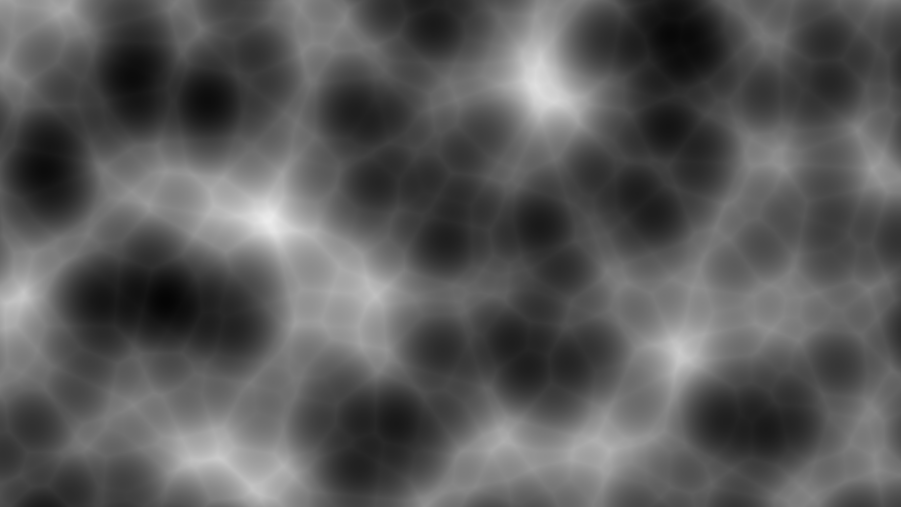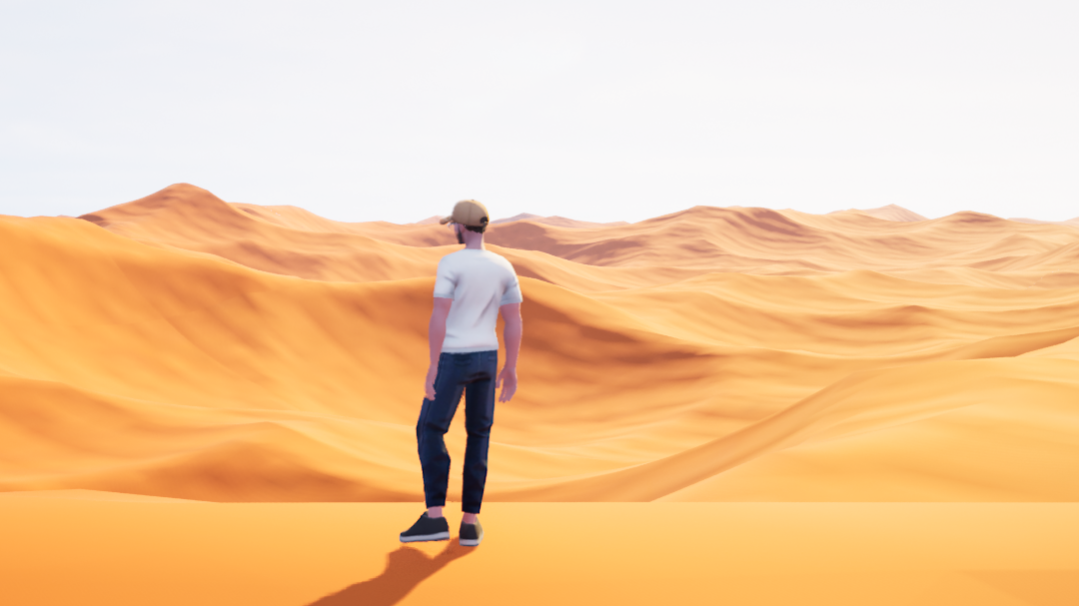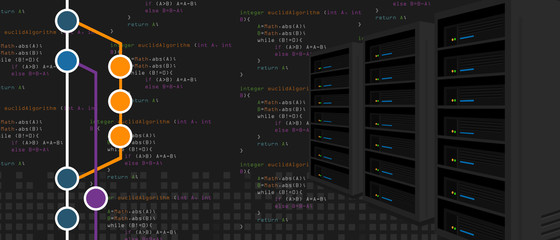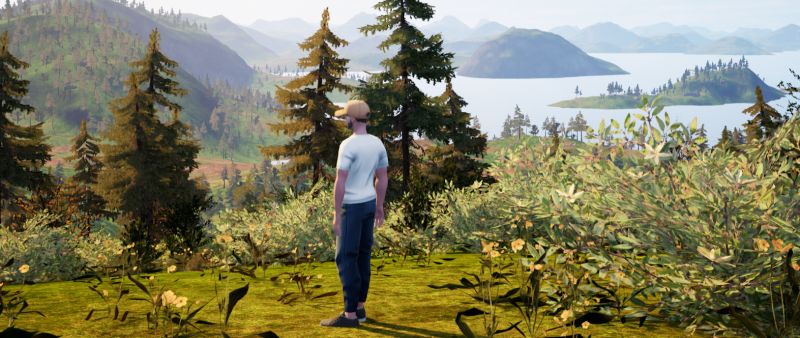In procedural world generation, noise is a commonly used technique to create natural-looking terrains, landscapes, and other features. There are different types of noise algorithms that can be used, especially Perlin noise and Simplex noise.
Perlin noise is a type of gradient noise that generates a smooth, continuous pattern of values. Simplex noise is a more efficient and faster variant of Perlin noise, which produces similar results. Worley noise, also known as cellular noise, generates patterns based on the distance between randomly placed points.
These noise algorithms can be combined and modified to create various types of terrain features, such as mountains, hills, valleys, and rivers. In addition to terrain generation, noise can also be used for generating other types of content, such as textures, clouds, and foliage.
As an example, the following quickly defined Worley/cellular noise …

… projected to a 3D plan, with few codelines in Unreal and a red-desert Quixel Texture, makes an acceptable desert-like landscape :

For the noise subject, instead of redo all from scratch, rely on the free and excellent ready-to use Rockam’s Fast Noise Generator plugin which is a wrapper for the also excellent Auburn’s Fast Noise Lite.




